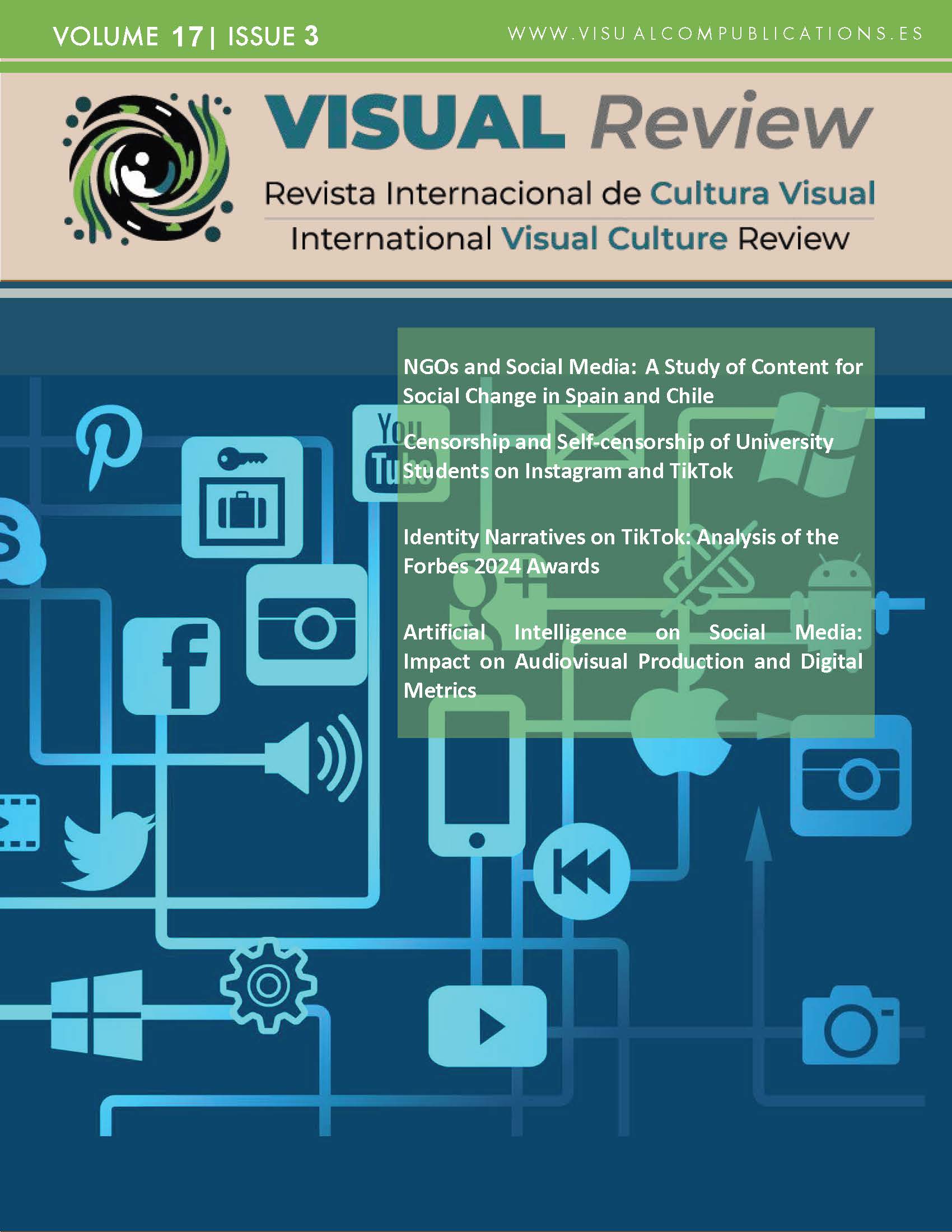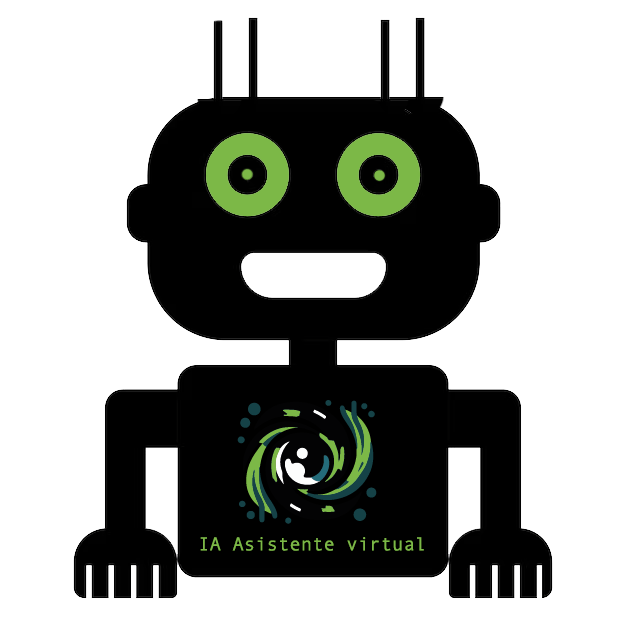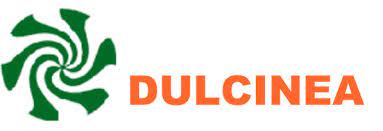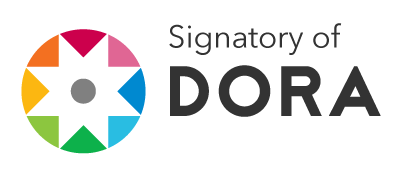Censorship and Self-censorship of University Students on Instagram and TikTok
Keywords:
Censorship, Self-censorship, Social networks, Digital behaviorAbstract
This study explores censorship and self-censorship of young university students on two of the most successful social networks: Instagram and TikTok. The research focused on how they perceive censorship on both platforms and how this perception translates into self-censorship behaviour. Similarities and differences perceived in both networks and which of them offers a more restrictive environment for freedom of expression are explored. Non-experimental research was carried out on a sample of 502 students. The results indicate a unanimous perception of censorship and a self-censorship response from young people.
Downloads
Global Statistics ℹ️
|
445
Views
|
178
Downloads
|
|
623
Total
|
|
References
Balkin, J. M. (2004). Virtual liberty: Freedom to design and freedom to play in virtual worlds. Virginia law review, 2043-2098. https://doi.org/10.2307/1515641
Bard, G. y Magallanes, M. L. (2021). Instagram: La búsqueda de la felicidad desde la autopromoción de la imagen. Culturales, 9(1), 519. https://doi.org/10.22234/RECU.20210901.E519
Bilewicz, M., Psychology, W. S.-P. (2020). Hate speech epidemic. The dynamic effects of derogatory language on intergroup relations and political radicalization. Wiley Online Library M Bilewicz, W Soral Political Psychology, 2020. Wiley Online Library, 41(S1), 2020. https://doi.org/10.1111/pops.12670
Conde, M. A. (2024). Explorando las tendencias y tácticas de control en internet: un análisis global de los bloqueos y censura en redes sociales. Revista de Comunicación de la SEECI, 57, 1-19. https://doi.org/10.15198/seeci.2024.57.e870
Evolvi, G. (2019). Islamexit: inter-group antagonism on Twitter. Information, Communication & Society, 22(3), 386-401. https://doi.org/10.1080/1369118X.2017.1388427
Gillespie, T. (2018). Custodians of the Internet: Platforms, Content Moder ation, and the Hidden Decisions that Shape Social Media. Yale University Press.
Gomes-Franco e Silva, F. y Sendín-Gutiérrez, J. C. (2014). Internet como refugio y escudo social: Usos problemáticos de la Red por jóvenes españoles. Comunicar: Revista Científica de Comunicación y Educación, 22(43), 45-53. https://doi.org/10.3916/C43-2014-04
Gorwa, R., Binns, R. y Katzenbach, C. (2020). Algorithmic content moderation: Technical and political challenges in the automation of platform governance. Big Data & Society, 7(1). https://doi.org/10.1177/2053951719897945
Heath, A. (2022, junio 15). Facebook plans ‘discovery engine’ feed change to compete with TikTok | The Verge. https://www.theverge.com/2022/6/15/23168887/facebook-discovery-engine-redesign-tiktok
Instagram (2025). Normas comunitarias. Servicio de ayuda de Instagram. https://es-es.facebook.com/help/instagram/477434105621119/?helpref=hc_fnav
Jansen, S., y Martin, B. (2015). The Streisand effect and censorship backfire. International Journal of Communication, 9, 656-671. https://1932--8036/20150005
Llansó, E; Hoboken, J; Leersen, P; Harambam, J. (2020). Artificial Intelligence, Content Moderation and Freedom of Expression. Transatlantic Working Group.
MacKinnon, R. (2012). Consent of the networked: The worldwide struggle for Internet freedom. Politique étrangère, 50(2), 432-463. https://dl.acm.org/doi/abs/10.5555/2530486
Martínez-Sánchez, M. E., Vicario, L. M., y Nicolas-Sans, R. (2022). Censura y Redes Sociales: El caso de Zahara. VISUAL REVIEW. International Visual Culture Review/Revista Internacional de Cultura Visual, 10(1), 1-10. https://doi.org/10.37467/revvisual.v9.3554
Martínez-Valerio, L., y Mayagoitia-Soria, A. (2021). Influencers y mensajes de odio: jóvenes y consumo de contenidos autocensurados. Revista Prisma Social. https://hdl.handle.net/10115/30379
Pérez, G. E. M. y El Mecky, N. (2024). Un enfoque de derecho contractual para la censura privada del arte en plataformas de redes sociales. IDP: revista de Internet, derecho y política, (41), 3. https://dialnet.unirioja.es/servlet/articulo?codigo=9700831
Pérez, R. V., Catalina-García, B. y de Ayala, M. C. L. (2019). Participación y compromiso de los jóvenes en el entorno digital. Usos de las redes sociales y percepción de sus consecuencias. Revista Latina de comunicación social, (74), 554-572. https://doi.org/10.4185/RLCS-2019-1345
Pino, E. B., Quero, H. J., & Díaz, G. H. (2022). Esplendores y miserias de las redes sociales. Comunicación: estudios venezolanos de comunicación, (199), 127-142. https://dialnet.unirioja.es/servlet/articulo?codigo=8856251
Piñeiro-Otero, T. y Martínez-Rolan, X. (2024). Interacciones digitales y desigualdad de género: Un estudio sobre el uso de Instagram entre alumnado universitario. Gender on Digital. Journal of Digital Feminism, 2, 33-56. https://doi.org/10.35869/GOD.V2.5892
Ramírez, J. F., Corchado, D., Morejón, M., Ramírez, J. F., Corchado, D. y Morejón, M. (2021). Algoritmo para la medición y análisis de la autoridad e influencia de los usuarios en las redes sociales y profesionales. PAAKAT: revista de tecnología y sociedad, 11(21), 1-27. https://doi.org/10.32870/PK.A11N21.598
Rosales, M. J. C., Ramírez, G. J. G., Velásquez, M. N. Z., Aguiriano, R. S. S. y Maradiaga, L. A. S. (2024). Libertad de expresión en las redes sociales: análisis de la censura automatizada por inteligencia artificial. La Revista de Derecho, 45, 295-310. https://doi.org/10.5377/lrd.v45i1.19390
Sánchez-Holgado, P. y Benito, M. E. R. (2024). Nudes on the Internet: Social Perception of Body Censorship on Instagram and Twitter (X). International Visual Culture Review. Revista Internacional de Cultura Visual, 16(8), 107-120. https://doi.org/10.62161/REVVISUAL.V16.5416
San Juan, J. L. (2021). El control de contenidos en las redes sociales: la nueva forma de censura de la era digital. Ibersid: revista de sistemas de información y documentación, 15(2), 23-28. https://doi.org/10.54886/ibersid.v15i2.4736
Serrano, J. (2016). Internet y emociones: nuevas tendencias en un campo de investigación emergente= Internet and Emotions: New Trends in an Emerging Field of Research. Comunicar: Revista Científica Iberoamericana de Comunicación y Educación. Scientific Journal of Media Education: 46, 1, 2016, 19-26. http://dx.doi.org/10.3916/C46-2016-02.
Stewart, D. R., & Bunton, K. (2016). Practical Transparency: How Journalists Should Approach Digital Shaming and the Streisand Effect. U. Balt. J. Media L. & Ethics, 5, 4.
Sturges, P. (2010). Misterio y transparencia: el acceso a la información en los dominios de la religión y la ciencia. Ibersid: revista de sistemas de información y documentación, 4, 21-28. http://www.ibersid.eu/ojs/index.php/ibersid/article/viewFile/3863/3643.
Vizcaíno-Laorga, R., Catalina-García, B. y de Ayala-López, M. C. L. (2019). Participation and commitment of young people in the digital environment. Uses of social networks and perception of their consequences. Revista Latina de Comunicación Social, (74), 554-572. http://www.revistalatinacs.org/074paper/1345/28en.html
Downloads
Published
How to Cite
Issue
Section
License
Copyright (c) 2025 Authors retain copyright and transfer to the journal the right of first publication and publishing rights

This work is licensed under a Creative Commons Attribution-NoDerivatives 4.0 International License.
Those authors who publish in this journal accept the following terms:
-
Authors retain copyright.
-
Authors transfer to the journal the right of first publication. The journal also owns the publishing rights.
-
All published contents are governed by an Attribution-NoDerivatives 4.0 International License.
Access the informative version and legal text of the license. By virtue of this, third parties are allowed to use what is published as long as they mention the authorship of the work and the first publication in this journal. If you transform the material, you may not distribute the modified work. -
Authors may make other independent and additional contractual arrangements for non-exclusive distribution of the version of the article published in this journal (e.g., inclusion in an institutional repository or publication in a book) as long as they clearly indicate that the work was first published in this journal.
- Authors are allowed and recommended to publish their work on the Internet (for example on institutional and personal websites), following the publication of, and referencing the journal, as this could lead to constructive exchanges and a more extensive and quick circulation of published works (see The Effect of Open Access).













